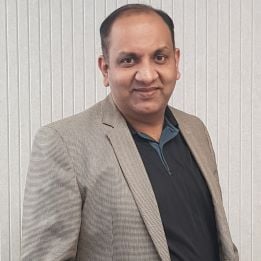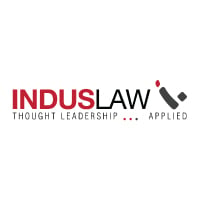

Chief operating officer and general counsel | ST Telemedia Global Data Centres India






Lalit T Khanna
Chief operating officer and general counsel | ST Telemedia Global Data Centres India
What are the most significant cases or transactions that you have been involved in over the past year?
In the last year, I transitioned to the role of Chief Operating Officer (“COO”) at STT GDC India, and I presently hold the dual mantle of COO and General Counsel. I see this elevation as the Company’s trust in my long-standing belief that a legal team shouldn’t be siloed and act as an active business partner. In wearing this hat, I was clear that I wasn’t wearing two hats but a larger one. This period has seen the onboarding of marquee customers, land banking and power to foster future growth, fruitful experiences with state authorities and regulators, and providing thought leadership, guidance, and momentum to the Company’s ESG goals. These are significant milestones for my Company, my team and me.
I take special pride in my contribution to assisting the Company in acquiring land parcels that ensure that a growing company like ours has the space to grow and, more importantly, grow in places where such growth will help the public good. Our focus on constantly pushing the envelope and providing solutions and support for our Company’s EHS and ESG policies has allowed our customers to know that associating with us makes commercial sense and contributes to strengthening their supply chains and ensuring they partner with a conscientious partner. From a numbers perspective, we have contracted for renewable energy that resulted in achieving ~50% of the Company’s energy needs from renewable sources, and our ‘zero’ deviation mission through our stringent monitoring of project and operational compliances has meant the Company has chalked up millions of safe work hours. My team and I contributed to these wins because we went the extra distance and could be in lockstep with our internal stakeholders and the Company’s vision.
While these may seem like platitudes for some, this was a necessity for me due to the still nascent nature of the industry and government regulations that are high-risk but also provide high rewards to first movers. While the Company has reaped the advantages from an increase in the Company’s bottom line, my team’s work has allowed us to negotiate better contracting positions that have percolated to and better represented our group’s vision as a whole and also allowed the sector to both gain more clarity on state and national data centre and ESG policies and in some cases the advantages of policies and positions championed by us.
The last year has also been a journey of outside looking in. I have been taking steps to equip my team with technological tools with a focus on Artificial Intelligence. I refuse to see contracting and the legal team as a sign-it-and-file-it destination to be resurrected at the time of negotiations or disputes. Contracting tools are being developed that provide for improvisation and customisation, relying on generative AI tools to host the life cycle of a contract and its rights and obligations in real-time. I believe that this will not only help the legal team but also empower other stakeholders.
Based on your experience, what is the key to collaborating successfully with business partners?
Speaking the same language as them.
I have dedicated significant time to learning and enhancing my skills in various aspects of business operations. This commitment has culminated in my recognition as a merit holder in the Global Executive COO program (2023-24) of IIM Lucknow. This is also a message to my team, many of whom have taken opportunities to become better equipped, such as in the realm of general management, negotiations and data privacy. This focus on being more has meant that my team does not look at problems as an exercise of narration or risk flagging but as one where the team actively participates in its solution. Of course, this was possible because STT GDC India has seen, recognised, and backed these steps. We have been able to canvass our attention to oversight, compliances, and advocating positions with the state as a strength.
I have ensured that the team has been equipped to be involved at all stages of the business and will work in tandem with other business partners, requiring an immense investment of my time and my team’s time and, most importantly, the trust of our business partners. We are involved in all aspects of the business viz. site selection, land acquisition, power procurement, monitoring projects and operations compliances, onboarding customers or vendors to managing their day-to-day activities in their partnership with us. Traditional gaps between the business and legal teams are bridged by onboarding more specialised talent or technology. I believe the contributions of my team have provided much-needed synergies. Today, while my team is extremely lean, it is still a big tent. My team includes individuals with qualifications in Law, Company Secretarial practices, MBAs, and Engineering – with a majority holding dual qualifications. The team is a dynamic mix of seasoned professionals boasting up to thirty years of experience and fresh talents, bringing a range of perspectives and expertise to our collaborative efforts. I have moulded a team where I can take ownership and deliver more cross-functionally.
However, this is not to say that the extension has only been on the part of my team. Other stakeholders and eams have met with us step by step. This has, of course, required fostering trust and proving our capacity, where business solutions arise due to the active contributions of the team and not despite us.
How do you motivate and manage the other members of your legal team well?
I believe that creating and mentoring a team should be a key focus. Throughout my journey at STT GDC India and before, I have been particular about the individuals who become part of my team, ensuring that individuals being onboarded fit nicely into the organisation’s vision.
While I note that the ambit of the question is on the motivation and management of the team, I would like to take a step back and comment on the team’s creation. As a recruiter, one of the first steps for me is the realisation that the definition of talent must be nuanced. Many members of my legal team are individuals who would be otherwise overlooked due to not fitting in the mould or being lost to the system for having made alternative career choices. I look for hunger in my candidates, candidates who strive for the best without compromising on fairness for their peers and stakeholders and, most importantly, candidates who seek to be invested in the team’s vision.
Having this team in place brings in the next and most demanding job of managing them. Obviously, I take steps to ensure that the team is well-equipped to undertake and have authority over their tasks. From a contracting and compliance viewpoint, these verticals use technology solutions in their day-to-day work. I have clarified that I am open to solutions that ensure the team is not bogged down doing repetitive tasks. There is a focus on learning targets to ensure team members have upskilling opportunities. But more important is the creation of a culture. I have tried to instil a lack of highly formalised verticals in my team’s work, ensuring that while team members have primary responsibilities, there is always an avenue for cross-work and exposure to other aspects of the team. I also require the team and verticals to define their aspects of personal success and professional and organisational achievements, ensuring that the team can claim authorship, accountability, and a personal stake. I have constantly expressed to the team that they have what it takes to be future GCs and that they must see their time with me as a way to get all the necessary exposures to hold them in good stead for the future.
I think the next aspect is self-awareness. I am aware and communicate to my team that I recognise that the nature of work has often required prioritising work over other needs. I have tried to ensure that the team is assured of a work culture that allows them flexibility and comfort to reach out. There is also a recognition that work-life balance is to be the norm, and if the pendulum does swing some days towards work, it will also swing back. I would also like to think that the manner in which the team has been staffed has meant that individuals coalesce together when they see others being overwhelmed.
I have reaped the rewards of my investment in the team. I lead a team with one of the organisation’s lowest attrition rates. Several team members have willingly sought to continue their association with me through various organisations. I see this as an achievement that I am particularly proud of.
What innovations have you made to the way your legal team works in the past year?
I have required my team to empower and be accessible to their stakeholders more effectively. An essential aspect is using technological solutions that have allowed stakeholders more visibility of the contracting process and post-contracting compliances.
The idea is to use the tools and expertise of my team to dissect and track not only our legal obligations but also the commercial and operations obligations arising from our contractual relationships with our external partners, allowing greater visibility of risks and avenues of growth. Today, I can proudly say that a large part of our compliances are assisted by technology.
I believe such steps are necessary in a high-performance industry such as the data centre industry, where STT GDC India has enjoyed a pole position. Moreover, the same is also a step toward mitigating future disputes and litigations.
Which political, economic or regulatory changes have impacted your work the most in the past year and what are the changes that you recommend for consideration of the government?
I must mention that there have been several positive changes in the last decade, and the Governments, both at the Centre and State level, are quite responsive and investor-friendly to attract investments in the country and states. In my view, the Government has announced several investor friendly policies to attract and promote newer technologies with a focus on semiconductors, artificial intelligence, data centres and other key areas. However, it is now critical to effectively implement these aspirational policies announced by Central and State Governments to attract investments. The effective implementation of the fiscal and non-fiscal incentives announced in the sector-specific policies becomes a protracted ordeal, necessitating a series of notifications, government orders, and amendments in multiple laws and regulations, which ideally could have been avoided by giving overarching enforcement to the sector-specific policies. This bureaucratic maze could have been sidestepped with more comprehensive and streamlined enforcement of sector-specific policies.
Another area where the Government could consider reforms is the uniformity in the policies for the promotion of clean and renewable energy across all the states. This could help India achieve its climate goals and boost its economy. It would require clear and consistent legal frameworks that support their implementation and incentivise their adoption by all the states. There is a desperate need to clarify disparate treatment by different levels of the state on the promotion of renewable energy and discontinuation of charges and costs that either disincentivise renewable energy or competitive practices. This is not to say that steps in the right direction haven’t been taken; however, the industry does suffer from delays and excessive regulation.